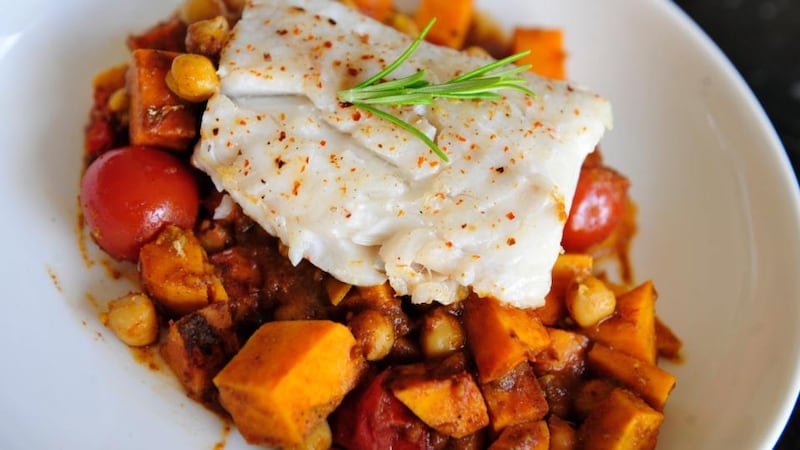Children hate to be different. The diagnosis of type 1 diabetes may leave them wondering: “Why me – did I eat too much sugar?” In fact, entire families can feel shaken and flummoxed initially. “Will the child be able to eat what the rest of the family is eating? What can they not eat? What about their favourite foods? Are there special diabetic foods to buy?”
Eating sugar is not the cause of type 1 diabetes. It’s an autoimmune condition. However, people with type 1 diabetes need to be more careful about their intake of sweet foods because different foods affect the blood sugars in distinct ways.
The big challenge is to understand how sharply different foods affect your blood glucose level, and how to balance the amount of carbohydrate with the right amount of insulin. This takes time, practice and patience.

Blood glucose testing can help you understand the dynamics of how what you eat affects your blood sugar levels. Testing your blood sugar before a meal and at intervals of two to four hours after eating is a great way to see how your blood sugar responds.
Some people may want to reduce their carbohydrate intake to help minimise swings in blood glucose levels. Your diabetic nurse can help you do this safely, by adjusting your insulin to match your reduced carbohydrate intake.
Changes can result in hypoglycaemia if doses are not matched correctly, so it’s important to discuss significant dietary changes with your hospital dietitian.
Resources
Learning to count your carbohydrates plays a key role in helping you balance your insulin with the food you eat. There are excellent courses such as DAFNE (dose adjustment for normal eating) available. Ask your specialist dietitian for details. Another excellent resource is the book and phone app called Carbs and Cals. Buy the UK edition if you order on Amazon. This is a fantastic visual illustration of how many carbohydrates there are in a wide variety of meals and portion sizes.
Fresh is best
Limiting processed foods is important, and trying to include home-prepared or freshly prepared food wherever possible is of huge benefit. People with types 1 and 2 diabetes may want to use alternative sweeteners in home baking to help curb their cravings for sweet treats. That may tick the taste box, but it's important to remember that many foods containing artificial sweeteners still have calories and carbohydrates.
Stevia, also referred to as rebaudioside A, is getting a lot of attention recently. It’s a new type of “natural” sweetener derived from the stevia leaf, a plant native to Central and South America.
It is 200-300 times sweeter than sugar, although some of its extracts may have a bitter or liquorice-like aftertaste. The fact that it differs from artificial sweeteners, as it is made from a natural plant source, makes it an attractive alternative for diabetics and parents. I hesitate to use the word “unprocessed”, though, as obviously the sweetener has been processed into a powder or liquid form.
Although stevia has been sold in Japan for about 40 years, stevia-based products have been approved as a food additive only since 2008 in the US, and since 2011 in the EU, and can now be found in many of the larger supermarkets here.
Stevia may offer an alternative for concerned parents wishing to reduce the sugar and artificial sweetener content of their child’s diet. Time will tell.
The following recipes are from the diabetes.co.uk website. The GDAs are not specifically for a person with type 1 diabetes but they will give you a flavour of the recipes’ overall nutritional package.
You can see that even home-made healthy muffins can still contain plenty of sugar. It's the amount and frequency of consumption that's important.
Spicy Indian fish bake
Serves 4
400g sweet potatoes/waxy potatoes
1 tbsp olive oil
400g tin of chopped tomatoes
Some sugar to taste
100ml vegetable stock (marigold brand is best if you don't make your own)
2 tsp garam masala
1 tsp each ground turmeric, ground coriander and cumin seeds
Pinch of hot chilli powder/chilli flakes
1 tbsp grated fresh ginger
2 crushed garlic cloves
400g can chickpeas (drained and rinsed)
4 thick white fish fillets – cod, haddock or pollock
A handful of fresh coriander leaves
Preheat the oven to 200°C/fan 180°C/gas mark 6. Cut potatoes into small cubes, then drizzle with olive oil. Pour over chopped tomatoes and vegetable stock. Add the garam masala, ground turmeric, ground coriander, cumin seeds and hot chilli powder.
Mix in the fresh ginger, two crushed garlic cloves and sugar. Season well, toss to combine, then roast for 25-30 minutes. Keep an eye on waxy potatoes if you are using them – they may need longer than sweet potatoes.
Remove from the oven and stir through the chickpeas that have been drained and rinsed.
Season the fish fillets, place them on top of the potato and chickpeas, and roast for a further 10-12 minutes. Sprinkle with fresh coriander leaves and serve with steamed greens or a side salad.
Apple sauce cinnamon muffins
Serves 12
¼ cup oat-bran cereal, uncooked
1 cup wholewheat flour
2 tsp ground cinnamon
1 tsp baking powder
¾ tsp baking soda
½ tsp salt
¾ cup unsweetened apple sauce
½ cup honey
½ cup vegetable oil
1 egg
1 tsp pure vanilla extract
¼ cup walnuts
Preheat oven to 190°C/gas mark 5. Coat 12 medium-size muffin cups with vegetable oil or line with paper baking cups.
In a medium bowl, combine oat-bran cereal, flour, cinnamon, baking powder soda and salt.
In a large bowl, combine the apple sauce, honey, oil, egg and vanilla. Stir in dry ingredients and mix well. Stir in nuts.
Fill prepared muffin cups until almost full. Bake for 15-20 minutes or until golden brown. Serve warm.
Paula Mee is lead dietitian at Medfit Proactive Healthcare and a member of the Irish Nutrition and Dietetic Institute. medfit.ie Tweet @paulamarymee











